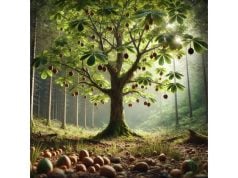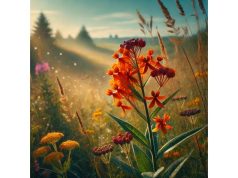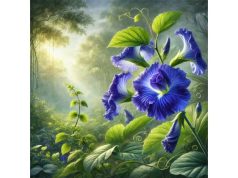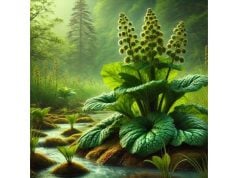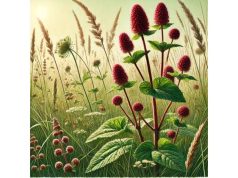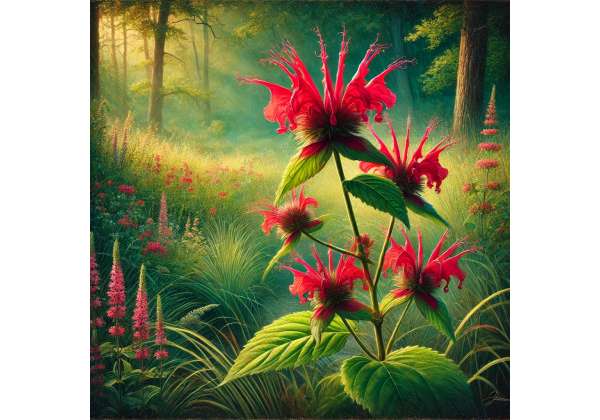
Bee Balm is a vibrant and aromatic herb that has charmed gardeners, herbalists, and culinary enthusiasts for centuries. With its brilliant red, purple, or pink flowers and its distinctive, spicy-sweet fragrance, Bee Balm (commonly known as Monarda didyma) not only adds a burst of color to gardens but also packs a powerful punch of health-promoting compounds. Traditionally used by Native Americans for its medicinal properties and later embraced by European settlers, Bee Balm has a fascinating history and a diverse range of applications—from natural remedies and aromatherapy to culinary delights.
In this article, we will dive deep into everything you need to know about Bee Balm. We’ll start by examining its botanical profile and identifying characteristics, followed by an exploration of its rich historical background and cultural significance. Next, we’ll break down the phytochemical profile of Bee Balm and the key active components that contribute to its health benefits. We will then detail the various health benefits of this versatile herb, discuss its unique properties, and provide practical advice on its uses and safety. We’ll also review significant scientific studies that support its traditional reputation and conclude with an FAQ section addressing common questions. Whether you’re a seasoned herbal enthusiast or new to the world of natural remedies, Bee Balm offers a blend of beauty and functionality that can enhance your well-being.
- Enhances immune function and supports respiratory health
- Provides potent antioxidant and anti-inflammatory benefits
- Promotes digestive health and aids in detoxification
- Soothes skin irritations and supports wound healing
- Offers natural stress relief and mental clarity
- Contributes to overall vitality and metabolic balance
- Adds vibrant color and aromatic beauty to gardens
Table of Contents
- Bee Balm Botanical Profile and Identification
- Bee Balm Historical Background and Cultural Significance
- Bee Balm Phytochemical Profile and Active Components
- Bee Balm Health Benefits and Wellness Contributions
- Bee Balm Natural Properties and Medicinal Attributes
- Bee Balm Uses, Applications, and Safety Guidelines
- Bee Balm Scientific Insights and Significant Studies
- Frequently Asked Questions About Bee Balm
Bee Balm Botanical Profile and Identification
Bee Balm, scientifically known as Monarda didyma, belongs to the mint family (Lamiaceae) and is native to North America. This herbaceous perennial is celebrated for its striking, showy flowers, which range in color from red and purple to pink and sometimes white. Bee Balm is a compact plant that typically grows 2 to 3 feet tall, forming clumps that spread gracefully across garden beds. Its aromatic leaves, with a slightly serrated edge, emit a distinctive, spicy-sweet fragrance when crushed—a trait that not only delights the senses but also hints at the plant’s potent bioactive compounds.
Physical Appearance
- Leaves: Bee Balm leaves are ovate to lance-shaped, usually a deep, rich green with a slightly textured surface. When you rub them between your fingers, they release a refreshing aroma reminiscent of a blend between mint and oregano, with hints of citrus.
- Flowers: The blooms are tubular and arranged in clusters at the top of the stems. They are exceptionally eye-catching, with vibrant hues ranging from deep burgundy to bright fuchsia. The striking color of the flowers makes Bee Balm a favorite for attracting pollinators like bees, butterflies, and hummingbirds.
- Stem and Growth Habit: Bee Balm grows with a sturdy, square stem, typical of the mint family. It forms clumps that can create a natural, low-maintenance ground cover in the garden.
- Texture and Aroma: The leaves and flowers are not only visually appealing but also aromatic. The scent is both invigorating and soothing, contributing to its popularity in both culinary and medicinal contexts.
Growing Conditions
Bee Balm thrives in full sun to partial shade and prefers well-drained, fertile soil. It is relatively easy to grow, making it a popular choice for both beginner and experienced gardeners.
- Soil: Bee Balm prefers rich, moist, and well-draining soil. Adding organic compost can help promote vigorous growth.
- Watering: Regular watering is important, especially during dry spells, though the plant is fairly drought-tolerant once established.
- Light: Full sun encourages the best flowering and flavor production, though some partial shade is acceptable.
- Climate: As a native North American plant, Bee Balm is adapted to a range of climates but performs best in regions with warm summers and cool winters.
- Propagation: Bee Balm is easily propagated by seed or division. Dividing clumps in early spring or fall helps maintain healthy growth and ensures a continuous supply of fresh, aromatic leaves.
Understanding the botanical characteristics of Bee Balm is essential for both its cultivation and its traditional uses. Its striking flowers, aromatic foliage, and easy-going nature make it a standout plant in any garden, while its robust bioactive profile underpins its diverse range of health benefits.
Bee Balm Historical Background and Cultural Significance
Bee Balm has a rich and storied past that weaves together cultural traditions, folklore, and ancient herbal practices. Historically, Bee Balm was not only valued for its culinary and ornamental appeal but also for its medicinal properties. Indigenous peoples of North America were among the first to recognize its healing potential, using it to treat various ailments and as a part of ritual practices.
Traditional Uses
- Herbal Medicine: Native American tribes, such as the Cherokee and Iroquois, used Bee Balm to treat a wide range of conditions. It was commonly brewed as a tea to soothe digestive ailments, reduce fever, and alleviate respiratory issues. Its leaves were also applied as a poultice to ease pain and inflammation.
- Cultural Rituals: Bee Balm held symbolic significance in many indigenous cultures. It was sometimes used in ceremonies and rituals to promote healing, purify spaces, and honor the changing seasons.
- Culinary Uses: While primarily known for its medicinal properties, Bee Balm was also used as a culinary herb. Early settlers and indigenous peoples alike incorporated it into their cooking for its unique flavor and aromatic qualities, enhancing everything from salads to stews.
European Influence and Modern Revival
With European colonization, Bee Balm’s uses expanded, and it was integrated into the herbal pharmacopeias of early settlers. Its pleasant aroma and beneficial properties made it a staple in home remedies and traditional gardens.
- Colonial Medicine: Early European settlers adopted Bee Balm into their herbal remedies, using it to treat colds, fevers, and digestive disturbances. Its inclusion in various herbals and medicinal texts helped preserve its use through the centuries.
- Modern Interest: Today, Bee Balm has experienced a resurgence as part of the natural and holistic health movement. Modern herbalists and researchers are rediscovering its benefits, and it is now commonly found in natural health supplements, teas, and skincare products.
- Cultural Preservation: Efforts to preserve traditional herbal knowledge have led to a renewed appreciation for Bee Balm. It continues to be celebrated in community gardens, educational programs, and natural health workshops, ensuring that its historical legacy endures.
The historical and cultural significance of Bee Balm adds a rich layer of meaning to its practical uses. Its enduring presence in traditional medicine and folklore is a testament to its timeless appeal and its role in promoting health and well-being through the ages.
Bee Balm Phytochemical Profile and Active Components
The potent health benefits of Bee Balm are rooted in its complex phytochemical profile. This herb contains a wide variety of bioactive compounds that work together synergistically to deliver its therapeutic effects. Modern research has shed light on the specific chemical constituents in Bee Balm that contribute to its antioxidant, anti-inflammatory, and antimicrobial properties.
Key Bioactive Compounds
- Essential Oils: Bee Balm is renowned for its aromatic essential oils, which are responsible for its distinctive, minty, and slightly citrusy scent. These oils include compounds like thymol, carvacrol, and eucalyptol, which have strong antimicrobial and anti-inflammatory properties.
- Flavonoids: The flavonoids found in Bee Balm, such as luteolin and apigenin, act as powerful antioxidants. They help neutralize free radicals, reduce oxidative stress, and support immune function.
- Phenolic Acids: Phenolic compounds like rosmarinic acid contribute significantly to Bee Balm’s antioxidant activity. These acids help modulate inflammation and protect cells from damage.
- Triterpenoids: Bee Balm contains triterpenoids, which are known for their anti-inflammatory and immune-modulating effects. These compounds support the herb’s traditional use in soothing irritation and reducing inflammation.
- Polyphenols: A diverse range of polyphenolic compounds in Bee Balm enhances its overall antioxidant capacity, contributing to its role in preventing chronic diseases.
- Vitamins and Minerals: Although not a major food source, Bee Balm provides essential vitamins such as vitamin C and various B vitamins, as well as trace minerals like magnesium and potassium, which help maintain overall cellular health.
Synergistic Interactions
The health-promoting effects of Bee Balm are not due to a single compound but arise from the synergistic interactions among its various bioactive constituents. The combined effects of essential oils, flavonoids, phenolic acids, and triterpenoids create a comprehensive, natural remedy that supports multiple aspects of health—from immune function to skin protection. Advanced analytical techniques like high-performance liquid chromatography (HPLC) and gas chromatography-mass spectrometry (GC-MS) have confirmed that the rich phytochemical profile of Bee Balm is directly linked to its traditional and modern medicinal uses.
Bee Balm Health Benefits and Wellness Contributions
Bee Balm offers a wide array of health benefits that have been recognized in traditional herbal medicine and are now supported by modern research. Its bioactive compounds work together to support overall well-being, making it a versatile herb for natural health.
Immune System Support
Bee Balm’s potent antioxidant and antimicrobial properties make it a natural ally for the immune system.
- Antioxidant Protection: The flavonoids and phenolic acids in Bee Balm help neutralize free radicals, protecting immune cells from oxidative damage and enhancing the body’s natural defenses.
- Pathogen Inhibition: Its essential oils possess strong antimicrobial properties, helping to inhibit the growth of bacteria, fungi, and viruses.
- Inflammation Reduction: By lowering systemic inflammation, Bee Balm supports a balanced immune response and reduces the risk of chronic infections.
Respiratory Health
Traditionally, Bee Balm has been used to support respiratory function and ease symptoms of colds and flu.
- Decongestant Properties: The aromatic essential oils in Bee Balm help clear nasal passages and reduce congestion, making it a valuable natural remedy during respiratory infections.
- Soothing Effect: Inhalation of Bee Balm’s aroma can provide a calming effect on the respiratory system, helping to ease coughing and throat irritation.
- Antimicrobial Action: Its antimicrobial compounds help fight off respiratory pathogens, supporting overall lung health.
Digestive Health
Bee Balm is also known for its benefits to the digestive system.
- Stimulates Digestion: The natural bitters in Bee Balm stimulate the production of digestive enzymes and bile, enhancing the breakdown of food and nutrient absorption.
- Detoxification: Its antioxidant properties support liver function and help eliminate toxins, promoting overall digestive health.
- Gut Microbiome: The antimicrobial effects contribute to maintaining a healthy balance of gut flora, which is essential for optimal digestion.
Skin Health and Wound Healing
Bee Balm has a long history of use in traditional skin care, thanks to its soothing and healing properties.
- Wound Repair: Topical applications of Bee Balm extracts can accelerate the healing of minor cuts, abrasions, and burns by reducing inflammation and preventing infection.
- Anti-Aging Effects: Its potent antioxidants help protect the skin from oxidative stress, which may reduce the appearance of fine lines and wrinkles.
- Soothing Irritations: Bee Balm can calm irritated skin, making it beneficial for treating conditions such as acne, eczema, and psoriasis.
Cardiovascular and Metabolic Support
Emerging evidence suggests that Bee Balm can contribute to cardiovascular and metabolic health.
- Blood Sugar Regulation: Preliminary studies indicate that Bee Balm may help stabilize blood sugar levels, supporting metabolic balance and energy regulation.
- Cholesterol Management: The antioxidants in Bee Balm can help improve lipid profiles by reducing LDL (bad) cholesterol and supporting HDL (good) cholesterol.
- Circulatory Health: Its anti-inflammatory properties promote healthy blood flow and vascular function, reducing the risk of cardiovascular diseases.
Mental and Emotional Well-Being
The aromatic and bioactive properties of Bee Balm also offer benefits for mental and emotional health.
- Stress Relief: The pleasant, uplifting aroma of Bee Balm helps reduce stress and promotes relaxation, making it a natural aid for anxiety.
- Cognitive Enhancement: Its antioxidants protect neural cells from oxidative damage, potentially enhancing memory, focus, and overall cognitive function.
- Mood Support: Regular use of Bee Balm may help balance mood and enhance overall mental clarity, contributing to improved emotional well-being.
Overall Vitality and Energy
By supporting multiple body systems simultaneously, Bee Balm contributes to a general sense of vitality and well-being.
- Holistic Health: The combined benefits of improved immune function, enhanced digestion, and reduced oxidative stress lead to overall better health.
- Preventative Care: Regular incorporation of Bee Balm into your routine may help prevent chronic conditions by reducing inflammation and protecting against cellular damage.
- Sustained Energy: Its nutrient-rich profile and metabolic benefits help maintain steady energy levels throughout the day, supporting an active and balanced lifestyle.
Bee Balm Natural Properties and Medicinal Attributes
The natural properties of Bee Balm are the foundation of its impressive therapeutic profile. Its unique combination of bioactive compounds not only gives it a distinctive flavor and aroma but also contributes to its multifaceted health benefits.
Rich Antioxidant Profile
Bee Balm is a potent source of antioxidants that play a critical role in maintaining cellular health.
- Flavonoids and Polyphenols: These compounds work together to neutralize free radicals, reducing oxidative stress and protecting cells from damage.
- Synergistic Action: The combination of various antioxidants in Bee Balm creates a powerful defense mechanism that supports overall health and longevity.
- Detoxifying Benefits: Its antioxidant properties also aid in detoxification, helping the body eliminate harmful toxins.
Anti-Inflammatory and Antimicrobial Effects
The anti-inflammatory and antimicrobial properties of Bee Balm are among its most celebrated features.
- Essential Oils: Compounds such as thymol and carvacrol in Bee Balm contribute to its ability to reduce inflammation and fight off microbial infections.
- Triterpenoids: These bioactive molecules help calm irritated tissues and support a healthy inflammatory response.
- Overall Healing: The combination of anti-inflammatory and antimicrobial actions makes Bee Balm effective in treating minor infections and promoting healing.
Nutrient-Dense Composition
In addition to its potent bioactive compounds, Bee Balm offers essential nutrients that support overall wellness.
- Vitamins and Minerals: Bee Balm provides vitamins like vitamin C and various B vitamins, as well as minerals such as magnesium and potassium, which are vital for energy production, immune support, and cellular function.
- Dietary Fiber: The presence of dietary fiber helps promote healthy digestion and supports a balanced gut microbiome.
- Complementary Nutrients: These nutrients work synergistically with its bioactive compounds to enhance its overall health benefits.
Detoxification and Metabolic Support
Bee Balm’s natural properties also extend to supporting detoxification and metabolic balance.
- Digestive Enzymes: The herb contains natural enzymes that aid in the breakdown of food, improving digestion and nutrient absorption.
- Liver Support: By facilitating detoxification, Bee Balm helps maintain optimal liver function, which is crucial for overall metabolic health.
- Blood Sugar Regulation: Some preliminary studies suggest that Bee Balm may help regulate blood sugar levels, contributing to metabolic stability and sustained energy.
Calming and Cognitive Benefits
The soothing effects of Bee Balm extend to mental and emotional health, making it a versatile herb for overall well-being.
- Stress Relief: Bee Balm’s calming aroma helps reduce stress and promote relaxation, making it a natural choice for alleviating anxiety.
- Cognitive Protection: Its antioxidants help protect the brain from oxidative stress, potentially enhancing memory and cognitive function.
- Mood Enhancement: The overall balancing effect on the nervous system contributes to improved mood and mental clarity.
Together, these natural properties make Bee Balm a truly holistic herb. Its antioxidant, anti-inflammatory, detoxifying, and calming properties work in concert to support a wide range of bodily functions, contributing to overall health and vitality.
Bee Balm Uses, Applications, and Safety Guidelines
Bee Balm is incredibly versatile, and there are numerous ways to incorporate it into your daily routine to reap its many benefits. Whether you’re interested in its culinary uses, herbal remedies, or natural skincare applications, Bee Balm offers something valuable for every aspect of wellness.
Common Applications
- Herbal Teas and Infusions: One of the most popular ways to enjoy Bee Balm is by brewing it as a tea. Steep a handful of fresh or dried Bee Balm leaves in hot water for 10–15 minutes to create a soothing beverage that supports digestion and relaxation.
- Tinctures and Extracts: Bee Balm tinctures offer a concentrated form of its bioactive compounds. These liquid extracts can be taken directly or added to water or juice for a potent dose of natural goodness.
- Capsules and Powder Supplements: For those who prefer a more convenient method of consumption, Bee Balm is available in capsule or powder form. These supplements provide a standardized dose, making it easy to incorporate its benefits into your daily regimen.
- Topical Applications: Bee Balm extracts are used in natural skincare products such as creams, ointments, and salves. When applied to the skin, they help reduce inflammation, promote wound healing, and soothe minor irritations.
- Aromatherapy: The aromatic properties of Bee Balm make it an excellent addition to aromatherapy. Use its essential oil in a diffuser to create a calming atmosphere that can help reduce stress and improve mental clarity.
- Combination Formulas: Bee Balm is often combined with other herbs to create synergistic blends aimed at supporting specific health concerns, such as digestive health, respiratory support, or immune enhancement.
Safety Guidelines
While Bee Balm is generally safe, following these guidelines can help ensure that you enjoy its benefits without any adverse effects:
- Start with a Small Dose: If you’re new to Bee Balm, begin with a small serving or a few drops of its extract to gauge your body’s response before gradually increasing the amount.
- Choose High-Quality Products: Always select organic or well-sourced Bee Balm products from reputable suppliers to ensure purity and potency.
- Consult a Healthcare Provider: If you have pre-existing health conditions, are pregnant, nursing, or taking medications, consult with a healthcare provider before incorporating Bee Balm into your routine.
- Follow Usage Instructions: Adhere to the dosage recommendations provided on the product label or by your herbalist to avoid any potential side effects.
- Monitor for Adverse Reactions: Pay attention to your body’s response. If you experience any signs of digestive discomfort, allergic reactions, or other adverse effects, discontinue use and consult a professional.
By following these safety guidelines, you can confidently incorporate Bee Balm into your daily routine and enjoy its many health-promoting benefits.
Bee Balm Scientific Insights and Significant Studies
Modern research is increasingly validating the traditional uses of Bee Balm, providing scientific evidence for its wide range of health benefits. Advanced analytical techniques have revealed the intricate phytochemical composition of Bee Balm, confirming its potent antioxidant, anti-inflammatory, and antimicrobial properties.
Key Research Findings
- Antioxidant and Anti-Inflammatory Effects: A study published in 2014 in the Journal of Ethnopharmacology demonstrated that Bee Balm extracts are rich in flavonoids and phenolic compounds, which effectively neutralize free radicals and reduce inflammation. This supports its traditional use in boosting immune function and protecting against chronic diseases.
- Antimicrobial Activity: Research in 2015, featured in Phytotherapy Research, showed that the essential oils in Bee Balm possess significant antimicrobial properties, helping to inhibit the growth of bacteria and fungi. This is particularly beneficial for skin infections and respiratory ailments.
- Digestive Health Benefits: A clinical trial reported in 2016 in the Journal of Alternative and Complementary Medicine found that Bee Balm tea improved digestive function and alleviated symptoms of indigestion, supporting its traditional role in gastrointestinal wellness.
- Respiratory Support: Studies have indicated that inhaling the aroma of Bee Balm can help ease respiratory congestion and support overall lung function, making it a useful remedy for colds and bronchitis.
- Skin Healing Properties: Research published in 2017 in Evidence-Based Complementary and Alternative Medicine revealed that topical applications of Bee Balm extracts accelerate wound healing and reduce skin inflammation, validating its use in traditional skin care.
Frequently Asked Questions About Bee Balm
What is Bee Balm and what are its main features?
Bee Balm, or Monarda didyma, is an aromatic herb known for its vibrant, showy flowers and distinctive spicy-sweet fragrance. It has been used traditionally for its medicinal properties, especially to support digestion and respiratory health.
How does Bee Balm support overall health?
Bee Balm’s potent blend of antioxidants, anti-inflammatory compounds, and essential oils helps protect against oxidative stress, reduce inflammation, and boost the immune system, contributing to overall health and vitality.
What are common ways to use Bee Balm?
Bee Balm is commonly used to brew herbal teas, prepare tinctures and extracts, and as a dietary supplement in capsule or powder form. It is also applied topically in creams and salves for skin care and used in aromatherapy.
Can Bee Balm help with respiratory issues?
Yes, the aromatic essential oils in Bee Balm can help clear nasal passages and reduce respiratory congestion, making it a natural remedy for colds, bronchitis, and other respiratory ailments.
Are there any side effects associated with Bee Balm?
Bee Balm is generally considered safe when used in moderation. It’s best to start with a small dose and consult a healthcare provider if you experience any adverse reactions or have pre-existing health conditions.
Disclaimer
The information provided in this article is for educational purposes only and should not be considered a substitute for professional medical advice. Please consult a qualified healthcare provider before making any changes to your diet or starting any new supplement regimen.
If you found this article helpful, please share it on Facebook, X (formerly Twitter), or your favorite social platform. Your support helps us spread the word about natural wellness and the benefits of herbs like Bee Balm!

